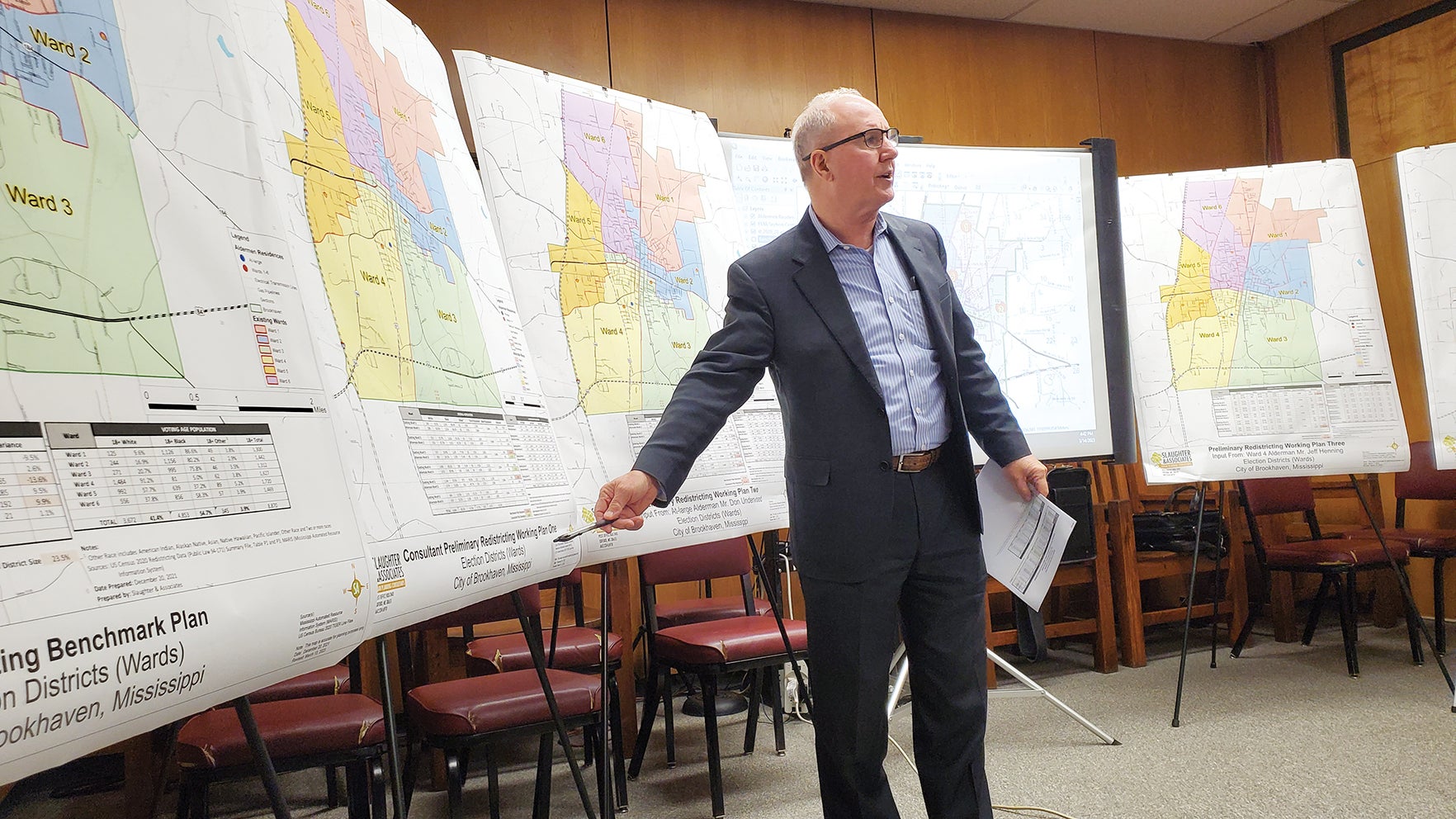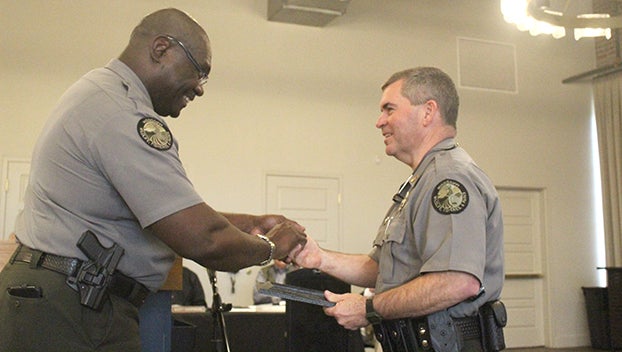City considers preliminary plan for ward redistricting
Published 4:02 pm Thursday, March 16, 2023

- PHOTO BY BRETT CAMPBELL Mike Slaughter of Slaughter & Associates points out the differences in proposed maps for redistricting of Brookhaven's voting wards.
The City of Brookhaven is nearing the end of its ward redistricting plan.
In December 2021, the city hired Slaughter & Associates PLLC to help determine if the city’s voting districts needed to be reconfigured. The U.S. Constitution and Department of Justice require equal distribution of the total population among all voting districts.
“It applies to the ‘one man, one vote’ principle,” said Mike Slaughter, namesake and principal of Slaughter & Associates.
Wards are considered equally distributed if there is less than a 10 percent difference between the smallest and largest populated voting districts, compared to the ideal population.
Slaughter gave the following example: If there are five districts and a total population of 5,000 voters, the ideal distribution would be 1,000 voters per district. Equal distribution would allow as much as 1,100 voters in the largest district and 900 in the smallest, if the other three districts were at or near 1,000 voters each.
If a deviation of greater than 10 percent existed in the wards, redistricting must take place. The benchmark study showed Brookhaven’s deviation to be at 23.5 percent, necessitating redistricting of the city’s voting wards.
In the 2010 official U.S. Census, Brookhaven had 12,513 residents. That number dropped to 11,674 in the 2020 Census. Divided by the six wards, the “ideal” overall population of each would be 1,946.
Under the proposed preliminary redistricting plan, the deviation of population among wards drops from 23.5 percent to 9.3 percent, below the 10 percent guideline for population over or under the ideal.
Aldermen met this week to discuss the plan and recommended changes, which Slaughter then made and returned to the city Thursday. Aldermen and the mayor will now have time to review the map and data prior to making any other needed changes.
When the board approves a plan, a public hearing will be scheduled to gather input from residents. Necessary revisions will be made, then the Board will choose to adopt and implement the best plan.
Preliminary proposed changes
According to the current preliminary plan, each ward would be adjusted as follows:
- Ward 1 — existing overall population of 1,760; adjusted population of 1,877; voting age population moves from 1,300 to 1,384.
- Ward 2 — existing overall population of 1,997; adjusted population remains the same; voting age population also remains the same, at 1,442.
- Ward 3 — existing overall population of 1,681; adjusted population of 1,857; voting age population moves from 1,312 to 1,444.
- Ward 4 — existing overall population of 2,131; adjusted population of 1,912; voting age population moves from 1,627 to 1,463.
- Ward 5 — existing overall population of 2,138; adjusted population of 1,994; voting age population moves from 1,720 to 1,606.
- Ward 6 — existing overall population of 1,967; adjusted population of 2,037; voting age population moves from 1,469 to 1,530.
The racial makeup of the voting age population also must be taken into account for redistricting. The Voting Rights Act mandates that redistricting must demonstrate that changes have neither a discriminatory purpose nor effect. Minority voters must not be “worse off” than they were in the existing distribution.
The following changes would take place under the preliminary proposed plan:
- Ward 1 — existing: 9.6% white; 86.6% black; 3.8% other; proposed: 11.8% white; 84.4% black; 3.8% other.
- Ward 2 — existing and proposed remain the same: 16.9% white; 80.2% black; 2.9% other.
- Ward 3 — existing: 20.7% white; 75.8% black; 3.5% other; proposed: 25.1% white; 71.3% black; 3.7% other.
- Ward 4 — existing: 91.2% white; 5% black; 3.8% other; proposed: 91.3% white; 5% black; 3.8% other.
- Ward 5 — existing: 57.7% white; 37.2% black; 5.2% other; proposed: 62.6% white; 32% black; 5.4% other.
- Ward 6 — existing: 37.8% white; 58.3% black; 3.9% other; proposed: 36.7% white; 59.6% black; 3.7% other.
In each ward, racial population changes at most by a total of 5% of the total voting population in that ward. Citywide, Brookhaven’s voting age population is 41.4% white, 54.7% black and 3.7% other.





